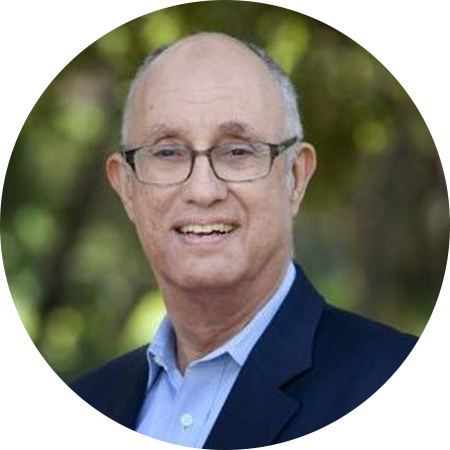More than one million women in the U.S. experience menopause each year, yet there are few workplace supports being put in place for this population. As more research is being conducted and the topic becomes less taboo, attitudes and expectations about menopause and its relationship to work are changing. Organizations must be prepared to assist…
Your Welcoa membership has expired.
Why It’s Important to Include Age in Diversity and Inclusion Efforts
At Stanford University, during the 2018-2019 academic year, virtually every meeting of the faculty senate included a report—or two—on the university’s diversity efforts. Yet ageism was never addressed—and continues to go unnoticed. According to a faculty colleague, the former dean of the School of Engineering, who is now the Provost, appointed a strategy committee packed with young faculty members simply because, to use her highly inopportune phrase, “they are the future.”
Clearly, diversity and inclusion are becoming a priority for all types of organizations. As of February 2018, diversity and inclusion roles, as a share of all job postings, were up by 35% from two years prior, according to Indeed. Meanwhile, PwC’s 18th Annual Global Survey noted that talent diversity and inclusiveness were now core components of competitiveness, and 77 percent of CEOs already had or intended to adopt a strategy that promotes D&I. Technology companies like eBay have even gone the extra step to regularly report their diversity statistics.
But, like with Stanford, virtually absent from most of these D&I conversations and action items is any mention of age. The arguments for valuing older employees are identical to the logic for emphasizing diversity and inclusion for other groups: In addition to being a matter of human rights (all people deserve equal opportunities and equal treatment), companies actually benefit from having a diverse workforce—and that includes diversity in age. After all, different perspectives often lead to more creative solutions and practices. Still, ageism in the workplace is a common and almost socially acceptable practice. It’s time for that to change.
Ageism Is Real
Ageism is a substantial workplace issue we need to address—especially because by 2022, more than one-third of the U.S. workforce will be over the age of 50.
In an AARP survey of adults over 45, 61% of respondents said that they had seen or personally experienced age discrimination. A review of academic studies of age bias in hiring and promotion concluded that “study after study has shown how employers… may not objectively evaluate job candidates’ potential productivity.”
But it’s more than being passed over for career opportunities. A study by the Urban Institute found that of adults aged 51 to 54 who were employed full-time, some 56 percent subsequently experienced an employer-initiated involuntary job separation, with typically devastating financial consequences (not to mention psychological repercussions).
Much like racism and sexism, ageism not only harms its victims, but it also infects a company’s culture, creates a less inclusive workplace and deprives organizations of the talent they need to compete and innovate. And it’s why companies need to include age as they work on broader D&I initiatives.
Many Myths About Older Employees Are False
So what exactly is driving this discriminatory behavior? Stereotypes about older workers that are as pervasive—and harmful—as those about other demographic groups. But, as is often the case, these beliefs are inconsistent with the evidence.
Contrary to popular mythology, youth is not a key attribute for founding a successful business. One study found that the average age of entrepreneurs was 42. Even considering just the top 0.1% of startups based on revenue growth during the first five years, founders started their companies, on average, at age 45.
There’s also no evidence to suggest that age is related to productivity. Stephen Cole, a sociologist at SUNY Stony Brook, reported decades ago that mathematicians, who, it was assumed, did their best work while young, experienced “no decline in the quality of work… as they progressed through their careers.” And another review of studies found that productivity was constant as scientists aged.
Such evidence suggests that companies can and do benefit from encouraging the hiring and retention of older workers, just as they can benefit from hiring and retaining women and people of color. In all of these instances, companies access a broader and better pool of talent.
Companies Should Expand Their D&I Efforts to Include Age
So how should we attack the problem? Fundamentally, research shows that measurement is important in influencing behavior. What gets measured gets managed. As companies increasingly report their D&I statistics for women, people of color and other groups, they should also report the data for the age distribution of their workforce.
There are other things companies can do as well. We know that language matters—that we see things, in part, by the way we refer to them—and that words can hurt. Many companies have banned racist, misogynist language and call out those who use terms that inflict psychological distress on others. A similar sensitivity to ageist language (even the use of more subtle terms like “energetic and fresh” or “digital natives” to describe a company’s ideal employees)—would be a nice step in the right direction. Stereotypes about older workers and disparaging comments about them remain too common, as numerous surveys attest.
When symphony orchestras wanted to hire more women, they did blind auditions where people could not see the gender of the person performing. When companies sought to build more inclusive workplaces, they focused on eliminating interview questions or signals that would not only harm someone’s chance of gaining employment, but also their likelihood of accepting an offer because the questions made them feel unwelcome. Consider taking dates off of resumes and banish questions that call into doubt someone’s energy or commitment just because of their age.
The parallels with other diversity and inclusion initiatives are many and direct. When companies do for age what they have already begun to do for race and gender, they will be well on their way to building a more diverse and welcoming workplace.
Until workplaces take ageism seriously, it will continue, depriving employers of wisdom, experience and talent, and inflicting unjust behavior on people simply because they have “too many birthdays.”

Jeffrey Pfeffer // PROFESSOR OF ORGANIZATIONAL BEHAVIOR, STANFORD UNIVERSITY
Jeffrey Pfeffer is the Thomas D. Dee II Professor of Organizational Behavior at the Graduate School of Business, Stanford University where he has taught since 1979. He is the author or co-author of 15 books including Leadership B.S.: Fixing Workplaces and Careers One Truth at a Time and The Knowing-Doing Gap: How Smart Companies Turn Knowledge Into Action. Pfeffer has won the Richard D. Irwin Award presented by the Academy of Management for scholarly contributions to management. He was listed in the top 25 management thinkers by Thinkers 50 and as one of the Most Influential HR International Thinkers by HR Magazine. Dr. Pfeffer received his B.S. and M.S. degrees from Carnegie-Mellon University and his Ph.D. from Stanford.




